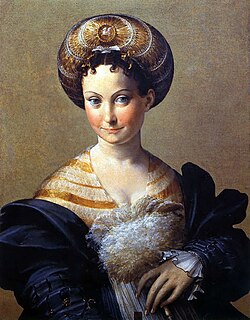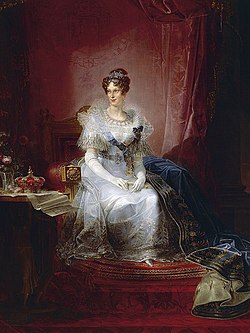 | |
 | |
| Location | Piazza della Pilotta, 6 Parma, Italy |
|---|---|
| Website | Official website |
The Galleria nazionale di Parma is an art gallery in Parma, northern Italy.
Contents
Painters exhibited in the museum include Beato Angelico, Fra Angelico, Canaletto, Ludovico Carracci ( The Funeral of the Virgin Mary ), Agostino Carracci ( Madonna and Child with Saints ), Correggio, Leonardo da Vinci, Sebastiano del Piombo, Guercino ( Susannah and the Elders ), Parmigianino ( Mystic Marriage of Saint Catherine ), Tintoretto, and others.
















